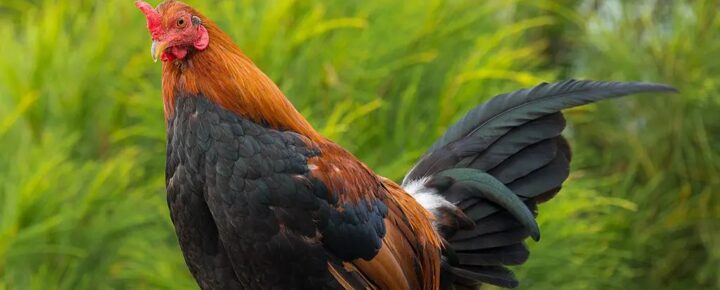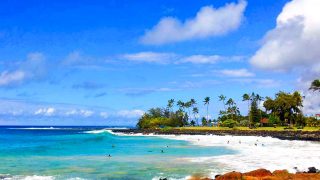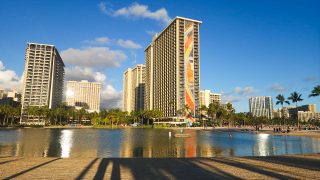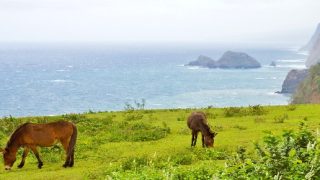Hawaii has remained the last state without confirmed avian flu cases in wildlife. However, its recent wastewater detection has sparked concerns. Travelers planning trips to the islands have already asked: Is this something to worry about or nothing?
The answer, for now, appears to be no. Experts agree that the risk to visitors and the general public remains low. However, understanding Hawaii’s unique context and following a few simple precautions can ensure a more worry-free visit.
On Kauai, where our roosters strut their stuff like self-appointed island mascots, the idea of avian flu certainly raises an eyebrow. These free-range feathered locals, known more for their 4 a.m. wake-up calls than for health risks, overrun the island confidently.
But with recent warnings about vigilance, even the most casual observer might wonder: Is that rogue rooster just being its usual scrappy self, or is it something else? While experts assure us the risk remains low, it’s hard not to imagine a chicken conspiracy brewing among the parking lot flocks.
Hawaii’s geographic isolation has long protected it from mainland diseases, but its role as a crossroads for bird migration presents a potential path for bird flu to arrive. The recent detection of avian flu RNA in Honolulu is not yet a confirmed outbreak. Instead, it is a reminder of Hawaii’s connection to global ecosystems.
Lani P. shared her concern with us this week about the feral chickens that roam freely around Maui’s parks and beaches, among other places: “I see these chickens everywhere, and I’ve always thought they’re harmless, but now I’m wondering if we should avoid them altogether.”
Public health officials emphasize that contact with wild birds, including feral chickens, should be avoided as a precaution. Observing wildlife from a distance, a common rule of thumb in Hawaii, remains the best practice for visitors.
Read: Taming Kauai’s Roosters: Hawaii Enacts Law Controlling Feral Chickens.
What does this mean for visitors.
Virtually all outdoor activities such as hiking, snorkeling, and beach picnics are unaffected. The casual visitor is at no significant risk from avian flu during these activities. However, visitors are encouraged to avoid the handling of birds, sick or otherwise, as a standard precaution.
Visitors exploring Hawaii’s agricultural tourism, such as farm tours or community-supported agriculture experiences, should also rest easy. Farms across the state have implemented stringent controls to ensure the safety of their operations and visitors. These precautions include shoe disinfectant stations and restrictions on animal interaction, making farm visits safe, enjoyable, and recommended.
Mark S., a frequent visitor from Portland, commented about farm tours saying, “I love visiting farms on Kauai, and it’s great to hear they’re taking these steps. I want to support local agriculture without worrying about safety.”
For those concerned about food safety, Hawaii’s Department of Health assures that pasteurized and fully cooked products, including eggs and poultry, are entirely safe to consume. No avian flu cases in Hawaii have been linked to foodborne exposure.
Hawaii’s unique isolation has reduced cases.
Hawaii’s geographic remoteness has historically delayed the arrival of global diseases. This distance has served the islands well in avoiding avian flu in wildlife for longer than any other U.S. state. However, migratory birds, particularly those traveling from Alaska, present a potential pathway for the flu to enter Hawaii.
Local residents often encounter feral chickens, a quirky element of Hawaii’s landscape. These birds, often spotted in parking lots and parks, are harmless in most cases but could become part of the larger conversation around avian flu.
A Kauai environmentalist mentioned, “Hawaii has a unique opportunity to set an example for other states. Our isolation isn’t just a challenge; it’s also a safeguard if managed correctly.”
This resilience is evident in how Hawaii’s agricultural community has adapted, not just protecting local livelihoods but also preserving experiences for visitors.
The broader picture about risks.
While the risk to visitors remains minimal, the implications of an avian flu outbreak could be significant for Hawaii’s agricultural sector. Local food production, as well as agricultural tourism, relies on proactive measures to mitigate potential risks. These measures include expanded testing, quarantine protocols, and public health outreach.
Hawaii’s resilience in managing potential outbreaks reflects its commitment to safeguarding both residents and visitors. As the islands navigate this new development, Hawaii remains a welcoming and safe destination.
We welcome your comments and questions.
Get Breaking Hawaii Travel News







Time for a turtle (hoku) egg omelette. The birds of Hawaii have flown the coop.
To me as a tourist it is very disgusting having chickens and roosters as well as pigeons around me when eating . They all carry disease and germs..
Looks like more bad eggs on Hawaii. How will they survive without their Loco Moco?